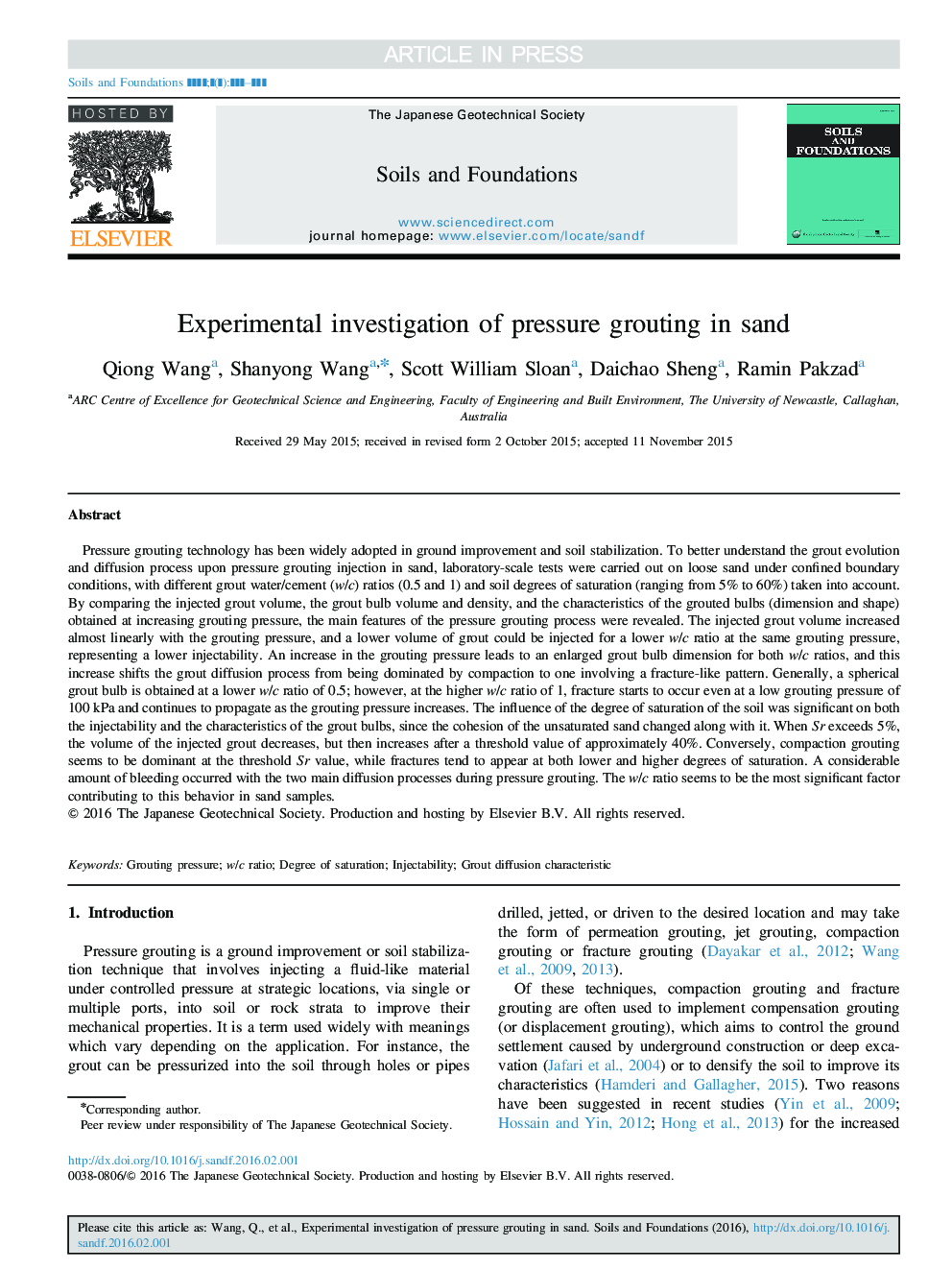| Article ID | Journal | Published Year | Pages | File Type |
|---|---|---|---|---|
| 307026 | Soils and Foundations | 2016 | 13 Pages |
Abstract
Pressure grouting technology has been widely adopted in ground improvement and soil stabilization. To better understand the grout evolution and diffusion process upon pressure grouting injection in sand, laboratory-scale tests were carried out on loose sand under confined boundary conditions, with different grout water/cement (w/c) ratios (0.5 and 1) and soil degrees of saturation (ranging from 5% to 60%) taken into account. By comparing the injected grout volume, the grout bulb volume and density, and the characteristics of the grouted bulbs (dimension and shape) obtained at increasing grouting pressure, the main features of the pressure grouting process were revealed. The injected grout volume increased almost linearly with the grouting pressure, and a lower volume of grout could be injected for a lower w/c ratio at the same grouting pressure, representing a lower injectability. An increase in the grouting pressure leads to an enlarged grout bulb dimension for both w/c ratios, and this increase shifts the grout diffusion process from being dominated by compaction to one involving a fracture-like pattern. Generally, a spherical grout bulb is obtained at a lower w/c ratio of 0.5; however, at the higher w/c ratio of 1, fracture starts to occur even at a low grouting pressure of 100Â kPa and continues to propagate as the grouting pressure increases. The influence of the degree of saturation of the soil was significant on both the injectability and the characteristics of the grout bulbs, since the cohesion of the unsaturated sand changed along with it. When Sr exceeds 5%, the volume of the injected grout decreases, but then increases after a threshold value of approximately 40%. Conversely, compaction grouting seems to be dominant at the threshold Sr value, while fractures tend to appear at both lower and higher degrees of saturation. A considerable amount of bleeding occurred with the two main diffusion processes during pressure grouting. The w/c ratio seems to be the most significant factor contributing to this behavior in sand samples.
Related Topics
Physical Sciences and Engineering
Earth and Planetary Sciences
Geotechnical Engineering and Engineering Geology
Authors
Qiong Wang, Shanyong Wang, Scott William Sloan, Daichao Sheng, Ramin Pakzad,
